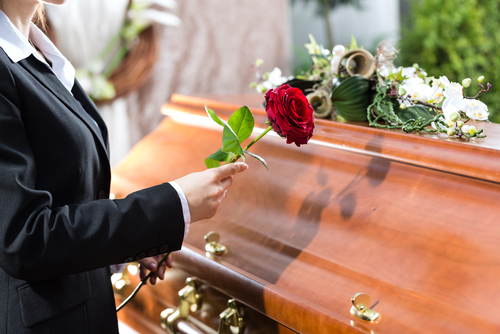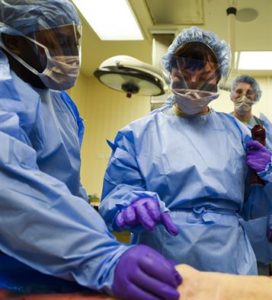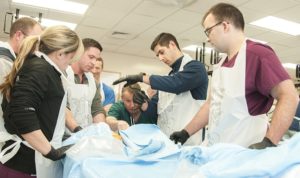
Credit: Wikimedia.org
Whole body donation plays an important role in a medical student’s education. And today, more medical schools are honoring those who donated their bodies to science and medical study. Memorials for medical cadavers have become a common practice at the top medical schools in the country. And some medical professionals claim that this could make students better doctors in the future.
The goal of holding memorials is to help students connect with the people who offered their bodies for dissection and study rather than treating them as any other medical tool. By holding memorials for medical cadavers, students are reminded that every body was once a human being with thoughts, dreams and a family of their own. These ceremonies not only thank those who have donated. They also honor their surviving loved ones and remind medical students to feel compassion for their loss.
An Historic Precedent
This isn’t an entirely new practice. For centuries, the medical community has had a complicated relationship with cadaver studies, which led to similar memorials for medical cadavers in the past. In societies that regard bodies as sacred, it can seem cold and even sacrilegious to dissect a body in the name of medicine.

Credit: defense.gov
For instance, in 15th century Italy, the primarily Catholic population would hold special memorial ceremonies for each body before performing public medical dissections. In some cases, they coordinated these public dissections during Carnival, the holiday right before Catholic Lent, in order to properly honor the dead.
At the time, the Catholic Church said that defiling a human body, even in the name of medical science, was a sin. Historians claim that many medical students felt guilty over their role in the dissection process. So they would hold elaborate funerals for the bodies.
However, public memorials for medical cadavers fell out of favor soon after the 15th century. For the next few centuries, medical students weren’t required to hold memorials for medical cadavers. In fact, many medical students would make jokes about the dissection process, or pose the bodies with props, like hats or cigars. This black humor became fairly common practice among aspiring doctors at the time.
Teaching Compassion and Empathy
All of this changed once more in the 1950s. Doctors and psychologists alike were concerned that young medical students were becoming too detached from the humanity of the bodies they worked with on a daily basis. They worried that this detachment would lead to less compassion for patients. They also feared that fewer people would want to donate their bodies if they knew that students were disrespecting them in cadaver labs.
This led to a resurgence of memorials for medical cadavers during the 1960s and 1970s. American universities started adopting the practice in the mid 1970s, and today it’s standard practice at most medical schools. Students at McGovern Medical School, for example, lead their own memorial ceremony, honoring all of the people who donated at once.

Credit: health.mil
Cadaver studies remain a vital part of the medical experience. These dissections teach aspiring doctors more about human anatomy than they can learn simply by studying medical books or taking exams. Today, students who have been through these programs say that the memorial services help them connect more deeply to the process. It also helps them form better doctor-patient relationships in their future careers.
In an interview with Atlas Obscura, Georgetown University medical student Gabriela Magda talked about her medical cadaver, whom she named “Fred.” “To this day, when I am examining a patient or reviewing a radiologic image, when I am looking at an organ, I always place it in my mind in the body of my cadaver. I’m extremely grateful for the donation ‘Fred’ made to my education.” she said.
Apparently, memorials for medical cadavers are a good thing for future doctors. And they are a touching way to remember those who gave such a generous gift.

 Medical Schools Hold Memorials for Medical Cadavers
Medical Schools Hold Memorials for Medical Cadavers



 How to Comfort A Dying Loved One
How to Comfort A Dying Loved One
 Our Annual Seven Holiday Gifts for Someone Who Is Grieving, 2024 Edition
Our Annual Seven Holiday Gifts for Someone Who Is Grieving, 2024 Edition














